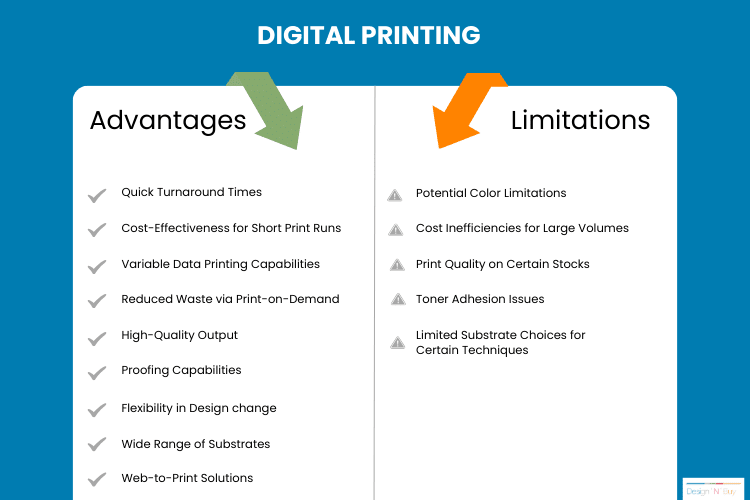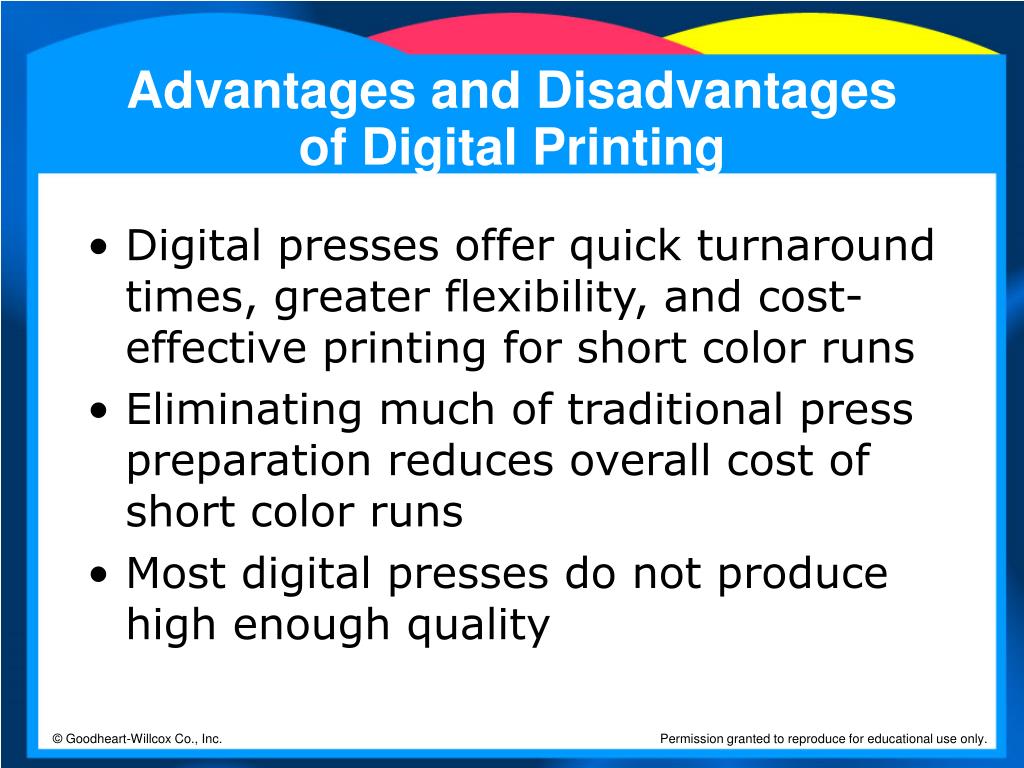Excitement About Digital Printing
Excitement About Digital Printing
Blog Article
Some Ideas on Digital Printing You Should Know
Table of ContentsSome Known Incorrect Statements About Digital Printing The Ultimate Guide To Digital PrintingThe smart Trick of Digital Printing That Nobody is Talking AboutThe Main Principles Of Digital Printing What Does Digital Printing Do?The smart Trick of Digital Printing That Nobody is Talking About
Variable information printing, such as straight mail with customized codes and addresses, is preferably suited for electronic printing. Digital fast printing only requires 4 steps of style, review, printing and binding to get every little thing done. Digital quick printing has an unrivaled benefit: print on need.According to PMMI, electronic printing allows brands and makers to react quickly to customer demands while enhancing the supply chain, lowering warehousing cost and waste, and appreciating faster time to market. That all audios wonderful, however just how does this modern technology do all that? The significant differentiator of these technologies is that there are no set-up charges and no plates with digital printing.
Getting The Digital Printing To Work
According to Wikipedia, the best distinction between digital printing and conventional methods such as lithography, flexography, gravure, or letterpress - Digital Printing is that there is no demand to change printing plates in electronic printing, whereas in these analog printing techniques the plates are consistently replaced. This results in quicker turn-around time and reduces cost when making use of electronic printing.
Digital printing is very adaptable, so it's very easy to make changes to the bundle design swiftly. It all goes back to the plates.
With conventional printing approaches, short-run printing is just not possible. Since a great style can make or damage your item, electronic printing regularly creates top quality, clear and vivid graphics each time.
Digital printing is the procedure of printing digital-based photos directly onto a range of media substratums. There is no demand for a printing plate, unlike with offset printing. Digital data such as PDFs or desktop computer publishing documents can be sent directly to the digital printing machine to publish theoretically, image paper, canvas, fabric, synthetics, cardstock and other substratums.
Top Guidelines Of Digital Printing
According to PMMI, digital printing enables brand names and suppliers to react promptly to consumer demands while improving the supply chain, decreasing warehousing cost and waste, and taking pleasure in faster time to market. That all noises excellent, however exactly how does this technology do all that? The significant differentiator of these modern technologies is that there are no set up charges and no plates with digital printing.
This results in quicker turn-around time and decreases expense when using electronic printing.

The Only Guide to Digital Printing
Extra stock news can mean even more waste later on. With conventional printing methods, short-run printing is just not feasible. Due to the fact that a wonderful design can make or damage your product, electronic printing consistently develops premium, clear and vivid graphics each time. Digital printing on versatile bags adds the brilliant, vibrant, and exact graphics that virtually beckon customers to reach out and touch them.

According to PMMI, electronic printing allows brand names and manufacturers to react promptly to client needs while enhancing the supply chain, decreasing warehousing price and waste, and delighting in faster time to market. That all audios terrific, yet how does this innovation do all that? The significant differentiator of these technologies is that there are no set up charges and no plates with digital printing.
Getting My Digital Printing To Work
According to Wikipedia, the greatest difference between digital printing and conventional techniques such as lithography, flexography, gravure, or letterpress is that there is no demand to change printing plates in electronic printing, whereas in these analog printing approaches home plates are repeatedly replaced. This causes quicker turn-around time and lowers cost when using digital printing.
Quick production indicates obtaining your item to market quicker. It likewise implies it's much easier and faster to make modifications in the future, when you alter a dish, add a SKU, or produce seasonal product packaging. Digital printing is highly adaptable, so it's very easy to make adjustments to the bundle design promptly. Everything returns to home plates.

What Does Digital Printing Mean?
Digital printing more information is the read this post here process of printing digital-based images straight onto a selection of media substratums. There is no need for a printing plate, unlike with offset printing. Digital documents such as PDFs or desktop posting files can be sent out directly to the electronic printing press to print theoretically, image paper, canvas, textile, synthetics, cardstock and various other substratums.
Report this page